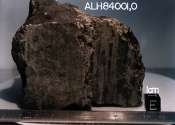Taming of a shape-shifter molecule
Shape-shifter molecules are in never-ending motion. Their structure fluctuates because the carbon bonds that hold them together constantly break up and form again. Researchers have now found a way to "tame" a shape-shifter ...









